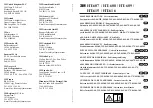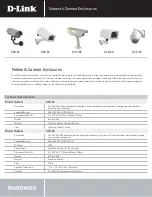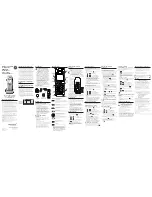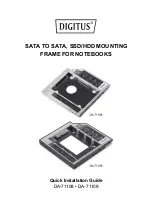
Page 9/13
6W-5826
09-2012
IR motion detector comfort
T
150
90° ... 45°
45° ... 90°
fct
cfg
T
150
90° ... 45°
45° ... 90°
fct
cfg
T
150
90° ... 45°
45° ... 90°
fct
cfg
T
150
90° ... 45°
45° ... 90°
fct
cfg
T
150
90° ... 45°
45° ... 90°
fct
cfg
T
150
90° ... 45°
45° ... 90°
fct
cfg
~ 180°
~ 135°
~ 90°
Fig. 8: Setting the detection angle
Setting the detection performance
Test mode must be used to test the detection performance. In test mode, the motion detector
works independent of brightness. Each detection switches the lighting and the status LED on for
3 seconds. Thereafter motion detection will be deactivated for 2 seconds.
The motion detector is connected and ready for operation.
Setting the test mode. To do so, set the response brightness potentiometer (Fig. 5, 14) to
the T position.
Leave the detection area and observe the switching behaviour.
If the motion detector switches on without motion in the detection fi eld, then sources of in-
terference (see Installation location) are present or the sensitivity is set too high.
Reduce the sensitivity if necessary and blank out sources of interference by adjusting the
detection angle or removing them.
Check the detection area using a detection test and adjust if necessary.
If the detection area is too small, it can be extended via motion detector extension units.
Setting the response brightness
The response brightness is the brightness value saved in the motion detector; when this value
is undershot the motion detector switches the connected load if movements are detected. The
response brightness can be set between approx. 5 (
) over
150 Lux
(factory setting) to daytime
operation (
). The
symbol stands for brightness-independent switching. The response bright-
ness can be variably adjusted in the intermediate areas.
In order to control the lighting in stairwells in accordance with DIN EN12464-1, 2003-3,
select the
150 Lux
potentiometer setting.
Turn the response brightness potentiometer (Fig. 5, 14) to the desired position.
To save the current ambient brightness as response brightness, use the Teach-In function
(see Setting the response brightness via Teach-In function).
As the brightness evaluation only takes place via the main unit, there is no need to set the
response brightness on extension units.
Set delay time
The delay time is the period of time saved in the motion detector which is the shortest time that
the lighting is switched on for when the response brightness is undershot and motion is detec-
ted.































